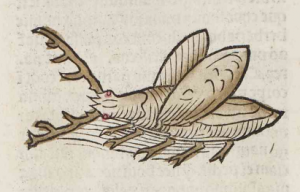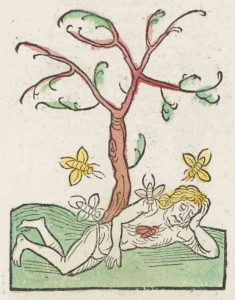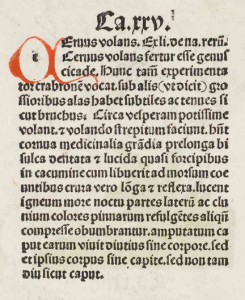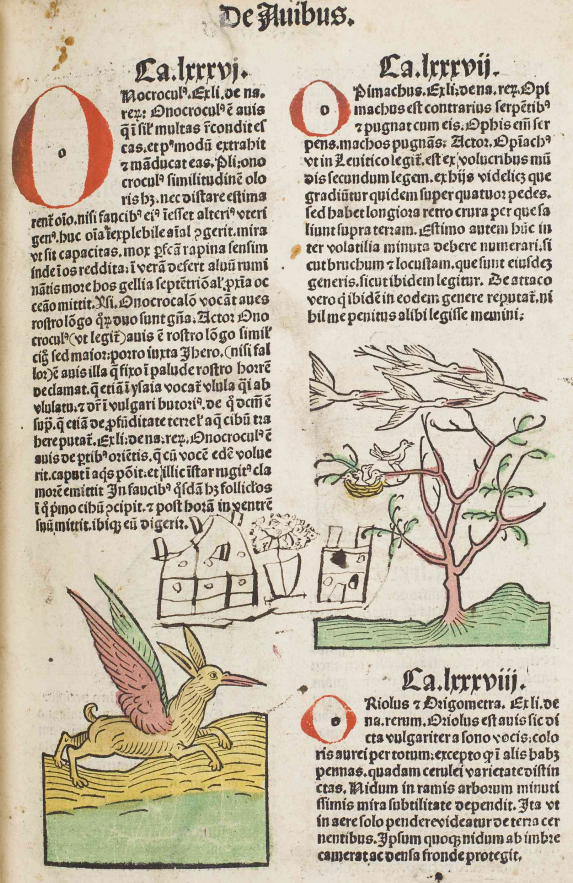A Medieval Beetle in the Rare Books Collection
 While much is known about the cultural depiction of beetles in the Classical period and during the Renaissance, much less is known about the cultural representation and meaning of beetles during the Middle Ages. This may be beginning to change with the contemporary digitisation of illuminated manuscripts, books and artworks, and the development of online translators, translations and dictionaries, which are providing new methodologies for analysis and interpretation.
While much is known about the cultural depiction of beetles in the Classical period and during the Renaissance, much less is known about the cultural representation and meaning of beetles during the Middle Ages. This may be beginning to change with the contemporary digitisation of illuminated manuscripts, books and artworks, and the development of online translators, translations and dictionaries, which are providing new methodologies for analysis and interpretation.
Recently I came across a drawing of an eight-legged flying beetle with antlers in the Baillieu Library’s Hortus Sanitatis (1491)[1], or Garden of Health, which I was able to compare with digitised copies located in other international collections[2]. The beetle is categorised in the section ‘Tractatus De Avibus’ (Treatise on Birds) and is displayed alongside other fantastic drawings like that of a man lying naked in a field being attacked by hornets and that of a myrmecoleon or ant-lion.
 On close inspection the drawing in the Hortus appears to be a rudimentary sketch of the European stag beetle (Lucanus cervus). Stag beetles are named after their large antler-like mandibles. Only the males possess these horns and use them to joust with other males in territorial disputes. Stag beetles live in forests, woodlands, hedges and gardens, but they are currently listed as a protected species in the United Kingdom and are thought to have disappeared from certain parts of Western Europe on account of environmental changes and habitat destruction.
On close inspection the drawing in the Hortus appears to be a rudimentary sketch of the European stag beetle (Lucanus cervus). Stag beetles are named after their large antler-like mandibles. Only the males possess these horns and use them to joust with other males in territorial disputes. Stag beetles live in forests, woodlands, hedges and gardens, but they are currently listed as a protected species in the United Kingdom and are thought to have disappeared from certain parts of Western Europe on account of environmental changes and habitat destruction.
 By modern standards the beetle-drawing in the Hortus is anatomically incorrect in a number of respects. The beetle has no antennae. It lacks a meso-thorax. It has eight legs rather than six, which technically makes it an arachnid, and its feet are cloven rather than clawed or hooked with tarsi. Having noted these anatomical errors, the stag beetle is identifiable with regards to its brown colouring, spectacular antlers, and general shape. Together with the accompanying textual description, it offers invaluable insights into how Europeans thought about insects towards the end of the Middle Ages:
By modern standards the beetle-drawing in the Hortus is anatomically incorrect in a number of respects. The beetle has no antennae. It lacks a meso-thorax. It has eight legs rather than six, which technically makes it an arachnid, and its feet are cloven rather than clawed or hooked with tarsi. Having noted these anatomical errors, the stag beetle is identifiable with regards to its brown colouring, spectacular antlers, and general shape. Together with the accompanying textual description, it offers invaluable insights into how Europeans thought about insects towards the end of the Middle Ages:
‘A flying beetle is similar in style to the cricket. They fly towards night and make a waspish noise. He has long horns that are medicinal, [and] those horns be bright and branched like teeth. The head may be taken off yet it [moves not] long without the body. The body without the head [moves] but not so long as the head’[5].
PhD candidate
School of Communication
University of Melbourne
Interested in finding out more?
Read about the Baillieu Library’s copy of Hortus Sanitatis in the University of Melbourne Collections magazine.
Browse the digitised version online
Endnotes
[1] Hortus sanitatis. [Mainz : Jacob Meydenbach, 23 June 1491]. UniM Bail SpC/RB MTC/20 Incunabula
[2] These include the Linda Hall Library in Kansas City, Missouri, one of the world’s pre-eminent science and technology libraries.
[3] Lister, Martin. Historiae Animalum Angliae. Londini : Apud Joh. Martyn Regiæ societatis typographum, 1678. Digital version available at http://lhldigital.lindahall.org/cdm/ref/collection/nat_hist/id/22115.
[4] Merian, Maria Sibylla. Metamorphasibus Insectorum Surinamensium. Tot Amsterdam, Voor den auteur…, als ook by Gerarde Valck, [1705]. Digital version available at http://lhldigital.lindahall.org/cdm/ref/collection/nat_hist/id/1049.
[5] Hortus sanitatis.


Hi Christopher, given the way the beetle is depicted, especially noting the way the mandibles are shown, I think it is possible that the five visible legs could be said to be a representation of six legs as readily as of eight. Sophie